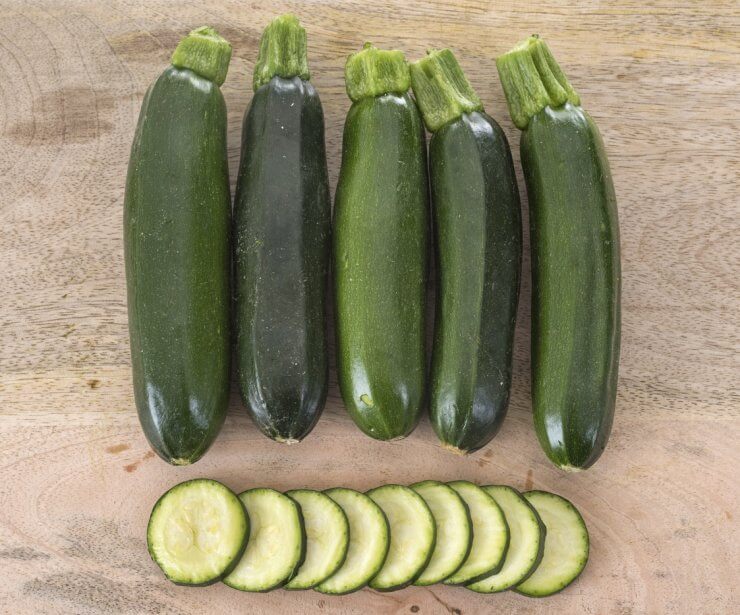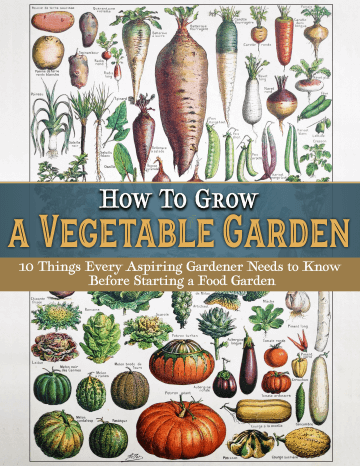
As an avid food gardener, I’ll admit it: I’ve fallen head over heels for a squash. And not just any squash. I’m talking about Dunja squash—a sleek, dark green, high-yielding zucchini variety that has become the diva of my summer garden.
If you’ve never grown Dunja, prepare to be dazzled. If you have grown Dunja, then you already know—you’re basically growing the Beyoncé of zucchinis.
Discover 10 top tips for growing, harvesting, and enjoying fruits, vegetables, herbs and more from your home garden—when you access the FREEBIE How to Grow a Vegetable Garden, right now!
A Squash with a Pedigree
Dunja (pronounced DOON-yah) squash was developed with both performance and pizzazz in mind. Originally bred in Europe and later introduced to North America, it’s been embraced by home gardeners and farmers’ market heroes alike for its stunning productivity and disease resistance.
Here are a few fun facts to put the “zing” in your zucchini:
- Dunja is an F1 hybrid, which means it’s the result of a very thoughtful match between two parent plants. We’re talking squash arranged marriages at their finest.
- It’s prized for early maturity—you’ll start harvesting your first fruits just 47–50 days after sowing. That’s faster than some people finish a garden bench DIY project.
- Dunja boasts open plants that make it easy to harvest without needing a machete to find your squash. Your forearms will thank you.
Thanks to its stunning dark green skin, uniform shape, and reliable yields, Dunja squash has become one of the most popular summer squash varieties among home gardeners in the United States. It’s a garden workhorse with the heart of a show pony.
A Foolproof Plan for Growing Dunja Squash (Even If You’ve Been Ghosted by Cucumbers)
Here’s the real scoop on how to grow Dunja squash, whether you’re working with a backyard garden, a collection of raised beds, or a sunny deck with some big ol’ containers.
Choosing Your Spot
- In-Ground Gardens: Dunja loves room to spread, but thanks to its open habit and relatively compact size (for a squash), it won’t take over the zip code.
- Raised Beds: Perfect for raised beds with full sun. Just give it about 2–3 feet between plants.
- Containers: Yes, you can grow Dunja in containers! Choose a pot that’s at least 5 gallons, though 10 gallons is even better. Use high-quality potting mix, and feed it regularly to keep it performing like the squash star it is.
Planting Tips
- Start seeds indoors 3–4 weeks before your last frost, or direct sow once the soil warms to 65–70°F.
- Plant 1 inch deep, and thin to the strongest seedlings.
- Full sun is non-negotiable. Dunja doesn’t do shade. She’s a sun worshipper.
Growing with Gusto
- Water deeply and consistently. Dunja likes moist roots but hates wet feet, so good drainage is a must.
- Add mulch to retain moisture and prevent soil splash, which can carry disease.
- Feed monthly with a balanced fertilizer, or go organic with compost tea and side-dressed compost.
Dealing with Garden Drama
- Dunja is resistant to powdery mildew, which is a big deal for squash growers. That means you’ll get a longer harvest window without that tragic end-of-summer leaf apocalypse.
- Still, keep an eye out for squash bugs and vine borers. Check leaves daily like a doting plant parent.
Harvesting Like a Pro
- Harvest Dunja squash when they’re 6–8 inches long for the best flavor and texture.
- Check every day. Dunja grows fast—you’ll swear they’re doubling in size overnight like something out of a sci-fi film.
From Garden to Table: How to Eat Your Body Weight in Dunja Squash (and Not Get Bored)
Dunja squash is like the little black dress of the kitchen: elegant, versatile, and appropriate for any occasion. Here’s where this green goddess shines:
- Grilled: Slice, brush with olive oil, sprinkle with herbs, and grill for a smoky summer side dish.
- Sautéed: A quick toss in garlic butter makes a fast weeknight side.
- Baked: Add to casseroles, lasagna, or ratatouille.
- Stuffed: Hollow it out and fill with quinoa, sausage, cheese, or whatever your heart (and stomach) desires.
- Raw: Shaved thin into ribbons for salads or spiralized into “zoodles.”
- Baked goods: Yes, you can bake it into breads, muffins, and brownies. Don’t knock it till you’ve tried chocolate zucchini brownies.
Final Thoughts: Dunja is the Garden Buddy You Never Knew You Needed
Growing Dunja squash is one of the most satisfying, rewarding, and just plain fun gardening adventures I look forward to every summer. It’s adaptable, reliable, and gives you plenty of bang for your gardening buck.
Sure, the zucchini jokes from friends and neighbors will start flying (“You got extras again, huh?”), but when you’re harvesting armfuls of flawless squash while others are cursing their powdery mildew, you’ll be grinning ear to ear.
So whether you’re planting in raised beds, containers, or a backyard plot worthy of a vegetable-themed rom-com, Dunja squash is a winner.
Want More?
Check out our Complete Guide to Growing, Harvesting, and Eating the Best zucchini, where we spill all the seeds (figuratively and literally) on how to make your squash-growing season a smashing success.
Discover 10 top tips for growing, harvesting, and enjoying fruits, vegetables, herbs and more from your home garden—when you access the FREEBIE How to Grow a Vegetable Garden, right now!




